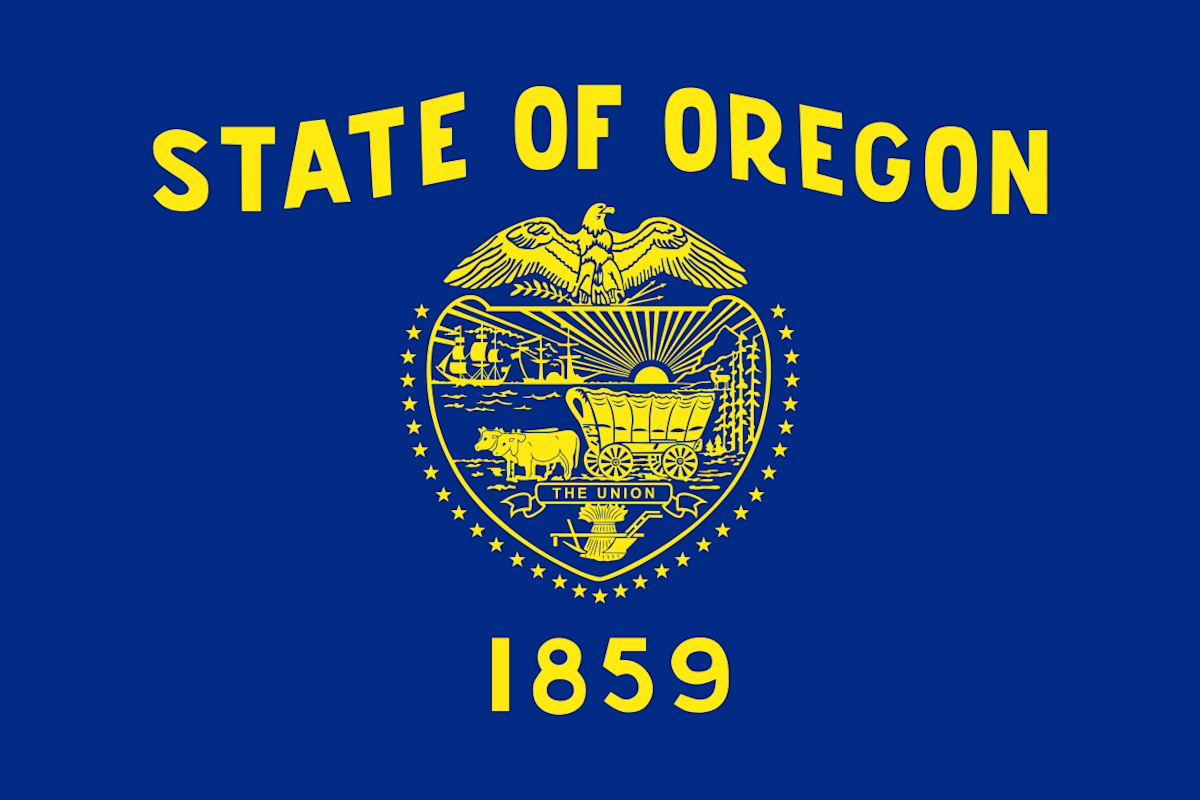Oregon Motorcycle Laws

Motorcycle crashes often result in severe injuries or deaths. According to data from the Oregon Department of Transportation, 930 motorcycle accidents occurred in the Beaver State in 2019, injuring 956 people and killing 56.
In Portland, Oregon’s largest city, 63 people died in traffic crashes, including 11 on motorcycles, according to the Portland 2022 Deadly Traffic Crash Report.
Although high-crash corridors make up only 8% of Portland streets, they still account for more than half of traffic deaths in the city. Since riding a motorcycle is inherently risky, it is crucial to know the laws that govern owners and riders of this type of vehicle.
This article provides information on motorcycle laws in Oregon. Motorcyclists and other motorists will find these laws particularly helpful, especially when facing motorcycle accident cases. Victims of motorcycle crashes can gain insights into how they can obtain compensation for their damages and losses, including the steps to take when filing a lawsuit against the parties responsible for their injuries.
Oregon Motorcycle License Requirements
Oregon motorcyclists are required by law to have a valid driver’s license and a motorcycle endorsement or instruction permit to ride legally in the state.
Riding a motorcycle without a motorcycle endorsement is a Class A traffic violation in Oregon. The presumptive fine for a Class A violation is $440; the minimum is $225; and the maximum is $2,000.
The motorcycle endorsement is added to a rider’s regular driver’s license. To get an endorsement, one must complete an approved motorcycle rider education course. The course is necessary so that riders can have the right experience and skills to ride a motorcycle.
Driver & Motor Vehicle Services certifies driver training businesses and instructors. The DMV has recognized Team Oregon as a provider of motorcycle rider education in the state. It works with the Oregon State University College of Public Health and Human Sciences and has the support of the Oregon Department of Transportation.
Here are the approved Team Oregon courses, including the tests that a completion card waives at the DMV:
eRider Intermediate is approved for riders 21 and older. The course only waives the motorcycle skills test.
eRider Basic is approved for riders 16 years of age and older. Just like the eRider Intermediate, it only waives the motorcycle skills test.
Intermediate Rider Training is approved for riders 21 and older. IRT only waives the motorcycle skills test.
Basic Rider Training is approved for riders 16 years and older. BRT waives both the motorcycle knowledge and skills tests.
Having a valid motorcycle license or endorsement helps ensure public safety, as drivers are expected to be skilled on the road. According to the National Highway Traffic Safety Administration, about 36% of motorcycle riders involved in fatal crashes in 2020 did not have valid motorcycle licenses.
Hence, motorcyclists must complete all the above-mentioned requirements if they wish to ride a motorcycle in Oregon responsibly. Those who comply may even enjoy benefits, such as being qualified for a discount on the insurance premium for their motorcycles.
Oregon Red-Light Law
According to the NHTSA 2020 data, 61% of motorcycle fatalities happened in urban areas, of which 35% occurred at intersections.
Intersections are highly traveled areas, so they are likely to have loose asphalt, standing water, and potholes.
Motorcyclists are vulnerable to poor road conditions. In many cases, a government contractor, agency, or state may be liable for motorcycle accidents for failing to maintain road conditions for safety.
Although public entities responsible for road maintenance must consider the needs of riders who use such roadways, all drivers must still practice intersection safety.
Motorcyclists should start by learning traffic rules, such as red-light laws, to avoid intersection crashes.
In Oregon, it is legal to make a right turn at a red arrow or red light unless a sign is posted prohibiting such an action. Before making the turn, however, the driver must bring his vehicle to a complete stop to be in compliance with the law.
After waiting for the light to complete one full cycle and still fail to detect a motorcycle, a rider may proceed through the intersection with caution.
Motorcyclists commit the offense of improperly proceeding at a stop light if they do any of the following:
Fail to exercise caution to avoid an accident
Fail to stop at the light as necessary
Disobey a police officer that prohibits them from proceeding
Ignore the direction of another traffic control device
Fail to yield the right of way to any motor vehicles approaching so close to the intersection as to constitute an immediate hazard
Oregon Distracted Driving Law
Oregon’s revised distracted driving law, or cellphone law, went into effect on October 1, 2017. The state makes it illegal to drive while using a mobile electronic device.
Distracted driving happens when a driver diverts his attention to something that is not related to driving. The four types of driver distraction are visual, auditory, manual, and cognitive.
Being inattentive while driving can be dangerous not just for drivers but also for passengers and non-occupants alike.
Distracted driving is particularly risky for motorcyclists because motorcycles are smaller and harder to see than cars.
For instance, a distracted car driver who veers off his lane and hits a motorcycle may send the rider flying into the air, resulting in serious injuries. In this case, the distracted car driver will be held completely responsible for the crash.
However, if the rider turns directly into the distracted car driver’s path of motion and the latter does not see the former in time to stop, therefore hitting the motorcycle, the distracted car driver may not be entirely liable for the rider’s injuries.
In either case, the expertise of a motorcycle accident attorney may be helpful in determining which party is at fault for the crash.
Oregon Motorcycle Helmet Law
Wearing a helmet is mandatory in Oregon whenever someone rides a motorcycle, moped, or unenclosed autocycle, either as a rider or as a passenger.
The helmet must be compliant with DOT standards. A DOT-approved protective headgear does not restrict vision or mask important sounds.
Not complying with the motorcycle helmet law in Oregon is a Class D traffic violation. Offenders face fines ranging from $115 to $250.
However, there are exceptions to the mandatory motorcycle helmet law. You are not required to wear a helmet if you are in an enclosed cab or traveling in a vehicle where three wheels are in contact with the ground and their speed is below 15 mph.
Meanwhile, if you are involved in an accident where neither you nor your passenger is wearing a helmet, the court may find you partially at fault for your injuries and those of the passenger. It may also reduce your compensation, even if you win your case.
Wearing a helmet, therefore, provides both physical and legal protection. To minimize damage in an accident, aside from wearing a helmet, it is also advisable that you wear face and eye protection and other protective riding gear, such as gloves, jackets, long pants, and sturdy footwear.
Oregon Lane-Splitting Law
In 2021, Oregon lawmakers passed a bill allowing motorcyclists to ride between lanes of congested traffic. However, then-Governor Kate Brown unexpectedly vetoed the bill.
Oregon lawmakers are taking another chance at pushing the policy in 2023. Under Senate Bill 422, motorcyclists may travel between lanes in slow or stopped traffic with a speed limit of at least 50 mph.
Additionally, the lawmakers have included a provision in the proposed lane-splitting bill to address safety concerns. Unlawfully passing on a motorcycle or moped will be considered a Class A offense, punishable by up to $2,000 under Senate Bill 422.
If the bill receives gubernatorial approval, Oregon will join other Western states in endorsing lane splitting or lane sharing under certain conditions.
Research suggests that lane-splitting may be a relatively safe motorcycle riding strategy when done in traffic moving at 50 mph or less or when riders do not exceed other vehicles by more than 15 mph.
In Oregon, motorcyclists have been supportive of the proposal to legalize lane-splitting, arguing that its implementation can improve traffic congestion and protect them from being rear-ended by distracted drivers.
Oregon Motorcycle Insurance Requirements
State law requires every driver in Oregon to insure his vehicle, whether it is a motorcycle or a moped, if it is operated on premises open to the public.
Below are the required minimum liability insurance coverages in Oregon:
Bodily injury and property damage liability – $25,000 per person
Bodily injury to others per crash – $50,000
Damage to property of others per crash – $20,000
Uninsured motorist coverage – $25,000 per person and $50,000 for bodily injury per crash
You may also purchase additional coverage or policies to have more protection during an accident.
If you fail to meet the insurance requirements and choose to ride your motorcycle, expect to receive severe penalties. Depending on the circumstances of your violation, you may be subject to hefty fines, risk your vehicle being towed, or lose your driving privileges.
Furthermore, if you are uninsured and get into a motorcycle accident, you can face a one-year license suspension.
Oregon Is a Fault State for Insurance Claims
Oregon follows a fault-based system in terms of financial responsibility for losses stemming from a vehicular accident. This means that whoever causes a crash involving a motorcycle must pay for the injuries and damages related to the accident.
If you are injured in a motorcycle accident, you may file a claim with the at-fault party’s insurance company. Some insurance companies tend to pay out as little as possible to protect their bottom lines. You might then choose to retain a motorcycle accident lawyer to negotiate fair compensation on your behalf.
Another option you have is to file a personal injury lawsuit against the at-fault driver, in which case the assistance of an experienced lawyer can also help you obtain the compensation you deserve.
Oregon Is a Modified Comparative Negligence State
Oregon follows a modified comparative negligence law with a 51% rule. Under this law, a motorcycle rider injured in a collision can recover damages as long as the court finds he is not more than 50% at fault for the accident.
The court assigns percentages of negligence to the parties involved in the crash case, and how much the victim is at fault will affect the amount of compensation he will get.
If you are involved in a motorcycle accident for which you are found to be 20% at fault, the court will reduce by 20% the damages to which you are entitled.
Therefore, if the court awards you $50,000 in damages, you can expect to receive only $40,000 instead of the full amount.
Statute of Limitations for Motorcycle Accidents in Oregon
Motorcycle accident victims must settle or file a lawsuit within two years from the date they obtained their injuries. For property damage cases, the time limit for filing a suit is six years. If you fail to file a lawsuit within the statute of limitations, the court will likely dismiss your case.
However, some injuries may not be known for months or years following the accident. In these cases, the time limit may start to run from the date the victim found out about his injuries.
Additionally, several exceptions may either shorten or increase the timeframe for filing. For example, if a crash victim is suing an establishment that served liquor to the defendant, a tort claim notice must be filed within 180 days of the accident. The same requirement applies to personal injury lawsuits against a government entity. In motorcycle accident cases where the injured are minors, the statute of limitations is tolled until they turn 18.
How Much Can Someone Sue for a Motorcycle Accident in Oregon
How much you can sue for a motorcycle accident in Oregon depends on the validity of your cause of action. Before you can sue someone for a motorcycle accident, you must first prove that they were at fault for your accident.
You might qualify for pain and suffering compensation if you were in an accident in Oregon that led to any non-economic damages.
Non-economic damages refer to compensation for subjective, non-monetary losses, such as:
Pain
Mental suffering
Emotional distress
Injury to reputation
Humiliation
Loss of care and companionship
Inconvenience and interference with normal activities aside from gainful employment
Loss of consortium
To be eligible for non-economic damages in the Beaver State, you must not be 50% or more at fault in the accident.
In addition, if, in any circumstance, you were under the influence at the time of the accident or drove without insurance, you would not receive non-economic damages.
It is also worth noting that non-economic damages in wrongful death suits cannot exceed $500,000 under Oregon state law.
Legal Resources for Motorcycle Accident Victims
Oregon State Bar Lawyer Referral Service
This lawyer referral provides relevant information about attorneys in your area. It maintains a list of lawyers by location and area of specialization. However, it does not employ attorneys, give legal advice, or answer legal questions. You can contact 800-452-7636 for any inquiries. Participating lawyers provide an initial consultation for a low cost. Additional fees also apply depending on your agreement with the attorney.
Oregon State Bar Public Information
You can get free online legal information regarding motor vehicle accidents and other legal topics on this Oregon State Bar web page. Note, however, that the details available on the site are not intended to be legal advice pertaining to your specific problem. None of the information is supposed to replace the work of a lawyer.
Oregon Judicial Department Self-Help Center
The State of Oregon Judicial Department maintains a self-help center to assist individuals in finding information that is relevant to their cases. If you wish to represent yourself in legal matters, you can go to this site to learn more about the law and the judicial process. Keep in mind, though, that self-help information is not legal advice. The state of Oregon does not allow the Oregon Judicial Department and its employees to offer legal advice to the public.
OJD eFile
This Oregon Judicial Department web-based file distribution system lets you electronically file, serve, distribute, and deliver court documents in the Oregon Tax Court and circuit courts. You can eFile at any time from your office, home, or any other location. eFile kiosks are available in most Oregon courts during regular business hours from Monday to Friday.
Expertise.com StaffAuthor
Step into the world of Expertise.com, your go-to hub for credible insights. We don't take accuracy lightly around here. Our squad of expert reviewers, each a maestro in their field, has given the green light to every single article you'll find. From rigorous fact-checking to meticulous evaluations of service providers, we've got it all covered. So feel free to dive in and explore. The information you'll uncover has been stamped with the seal of approval by our top-notch experts.


![¿Cuál es la indemnización promedio de las demandas por accidentes de moto? [2023]](https://images.ctfassets.net/k00sbju4hbzq/590XSDSoqNVs6XSMNY5s3G/a969ee3bedaaf9016cec601fc30f495b/average_motorcycle_accident_settlement.jpg?fit=fill&w=384&q=75)

